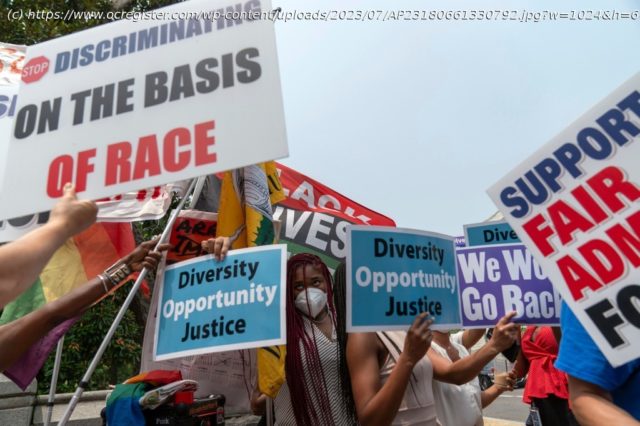Precedents only control until they don’t.
For decades, U.S. employers and university admissions officers have wandered in a legal minefield, never fully certain whether racial discrimination is allowed, prohibited or mandatory.
It appears that the answer now is “prohibited.” On Thursday the U.S. Supreme Court struck down the race-based admissions programs at Harvard and the University of North Carolina.
The 6-3 decision in the case, Students for Fair Admissions, Inc. v. President and Fellows of Harvard College, overruled the court’s 2003 decision in Grutter v. Bollinger, in which the justices held that student body diversity is a compelling state interest that justifies the use of race in university admissions, with some limits, and not forever.
No longer. “The student must be treated based on his or her experiences as an individual — not on the basis of race,” the majority opinion states. “Many universities have for too long done just the opposite.”
Civil rights groups raged over the decision. The NAACP said the court was trying to “turn back the clock,” the League of United Latin American Citizens decried “a historic civil rights setback” and a coalition of Asian American civil rights groups complained that the court “has chosen to ignore long-standing legal precedent.”
But there’s a longer-standing precedent that Chief Justice John Roberts cited in his opinion for the court, which was joined by Justices Thomas, Alito, Gorsuch, Kavanaugh and Barrett. Before the affirmative action cases, there was Brown v. Board of Education. “In that seminal decision,” Roberts wrote, the Supreme Court “set firmly on the path of invalidating all de jure racial discrimination by the States and Federal Government.”
Brown v. Board of Education was the landmark desegregation decision in 1954 that overruled earlier precedents to hold that racially segregated schools violated the equal protection clause of the Fourteenth Amendment.
So that’s at least three times since 1954 that precedents have been overruled on the subject of whether the Constitution does or does not allow racial discrimination: the Supreme Court rejected categories based on race in Brown, allowed them in Grutter, and rejected them again in SFFA v.






